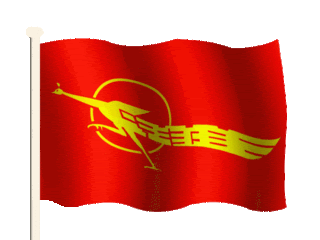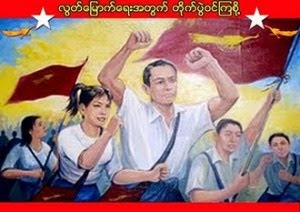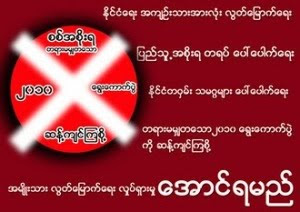In every level of social structure, conflict exists as a natural part of human life because it is a process of interaction among two or more persons or groups. Although it can be constructive for change and growth, it can also be destructive depending on the dealing manner that leads to violence and war.
According to the conflict scholars, there are various types of conflicts based on the conflict framing such as
Interpersonal conflicts (family conflicts, student conflicts, youth conflicts, workplace conflicts)
Inter-group conflicts ( identity, race, ethnicity, gender, religion and cross-cultural conflicts)
Public policy conflicts ( environmental and social policy conflicts)
International conflicts ( Conflicts between different nation states and conflicts between people and organizations in different nation-states)
All these conflicts pass through a series of phases so that understanding and identifying these phases are important to undertake appropriate measures.
Kriesberg (2005) identified a series of phases of conflict in seven stages.
Latent Conflict
As people have different needs, values or interests, the potential for conflict exits. However, it does not emerge until the ‘triggering events’ occur. If the conflict has not emerged, it can be prevented by means of democratic institutions to provide peaceful avenue to discuss and construct a common identity so that misunderstandings and frustrations can be minimized.
Conflict Emergence
A triggering event can lead to the emergence of conflict. It may be perceived as a threat to a particular group’s existence and old traumas emerged. Experiences of oppression and injustice have become epitomized and given high importance by these events.
Conflict escalation
The emergence of conflict can be easily and quickly followed by escalation and institutionalization. In this stage, members of each side view members of other side as enemies and old dissatisfactions and grievances have aroused. This escalation may lead to de-escalation/ settlement or Hurting Stalemate stages.
Hurting Stalemate
This is a situation in which neither side can win. Rubin (1994) described as a situation in which both sides do not want to back down or accept loss although the costs of continuing the struggle exceed the benefits to be gained. (Rubin, pg.152, 1994)
De-escalation/ Negotiation
This stage tends to be slow and harder to achieve as long as at least one side thinks it can win. Various kinds of approaches are needed as reduction in tension approach, ice-breaking, cooling off periods and communication strategies; however, resolution can only be achieved when both parties are willing to negotiate each other. Zartman (2000) referred it as “Ripeness”. (Zartman, 2000)
Settlement
In this stage, the underlying causes of conflict are reduced and collective identities emerged. The changing needs and interests of the parties affect the ‘sustainability’ of a settlement. (Harris, 2003)
Post-conflict peace building
If the conflict occurs between two people, it may not be hard. However, if the conflict occurs between the groups as a societal-level conflict, it may take a long period for peace building, culminating in apology, forgiveness and reconciliation. (Braham, 2003)
These phases of conflict can be used to analyze the current anti-Muslim riots in Burma. The recent riots started due to a report of an alleged rape of a young Burmese woman by three Muslim men. This is not only the case during the military regime’s administration period. Similar cases have happened before since 1962. According to the seven-phase conflict description, these cases can be considered as “triggering events” that lead to the emergence of the conflict between some Muslims and Burmese. The deep-rooted causes of the conflict are not related to the rape case as well as the Muslim Religion itself. The ‘rape’ case can be emerged with Buddhist or Christian men as well.
However, the causes were rooted in the latent conflict phase because there has not been a democratic institution in Burma to discuss and construct a common identity. In addition, there has not been a fair trial for ‘rape cases’ because the ruling Burmese Regime itself has allowed its troops to commit rape as a weapon to terrorize the ethnic peoples.
Moreover, the Burmese military regime has no intention to minimize the misunderstandings between two groups because the riots can divert the people’s attention from the economic mismanagement outcomes, failure of national reconciliation, and oppression to political activists, human rights abuses to ethnic peoples, religious discrimination and persecution, and other injustice affairs. As a result, the regime adopted the strategy to spread the rumors of the Muslims Religion, to hush up the reports of the alleged rape and to flood the anonymous pamphlets of hate literature. By using these means, the tensions were brought to the boiling point and both sides see each other as enemies and the conflict emerged quickly followed by the escalation stage. The violence outbreak occurs so that the military regime can prevent the emergence of people power movement from political and economic concerns. The regime has encouraged the riots several times whenever the growing public outrage occurred throughout the history and as a result, the conflicts between the Burmese and Muslims pass through a three-stage cycle instead of a peaceful solution that should have done in the latent conflict stage.
In conclusion, I would like to appeal to both Muslims and Burmese to be united to confront the ‘real problem maker’ and solve the misunderstandings and grievances by peaceful means. Anti-Muslim riots are simply used as a tool of Burmese Military regime to divert the people’s attention. “Why should you put yourself as a victim of these cruel projects by the Rapist Regime?” Let’s unite together.
Khin Ma Ma Myo
26/02/2006
----------------------------------------------------------------------------------------
References:
Braham, Eric (2003), “Conflict stages, beyond Intractability”, Conflict Research Consortium, University of Colorado, Boulder
Kriesberg, Louis (2005), “Nature, Dynamics, and Phases of Intractability”, Washington DC: US Institute of Peace
Kriesberg, Louis (1998), “In constructive conflicts: From escalation to Resolution”, New York: Rowman and Littlefield
Mayer, Bernard (2000), “The Dynamics of Conflict Resolution: A practitioner’s Guide”, San Francisco: Josey-Bass Inc.
Rubin, J., Pruitt, D. and Kim, S. (1994), “Social Conflict: Escalation, Stalemate, and Settlement”, New York, McGraw-Hill.
Santiso, C., Harris, P., Bloomfield, D. (2003), “Sustaining the Democratic settlement”, in “Democracy and Deep Rooted Conflict”, IDEA
Zartman, W. (2000), “Ripeness: The Hurting Stalemate and Beyond”, in International Conflict Resolution after the Cold War”, Washington National Academy Press.
Report By Karen Human Rights Group (2002), “Easy targets: The persecution of Muslims in Burma”
Transcend Peace University: A Peace and Development Network for Conflict Transformation by peaceful means. “Peaceful Conflict Transformation” short course- lecture notes.
----------------------------------------------------------------------------------------
References:
Braham, Eric (2003), “Conflict stages, beyond Intractability”, Conflict Research Consortium, University of Colorado, Boulder
Kriesberg, Louis (2005), “Nature, Dynamics, and Phases of Intractability”, Washington DC: US Institute of Peace
Kriesberg, Louis (1998), “In constructive conflicts: From escalation to Resolution”, New York: Rowman and Littlefield
Mayer, Bernard (2000), “The Dynamics of Conflict Resolution: A practitioner’s Guide”, San Francisco: Josey-Bass Inc.
Rubin, J., Pruitt, D. and Kim, S. (1994), “Social Conflict: Escalation, Stalemate, and Settlement”, New York, McGraw-Hill.
Santiso, C., Harris, P., Bloomfield, D. (2003), “Sustaining the Democratic settlement”, in “Democracy and Deep Rooted Conflict”, IDEA
Zartman, W. (2000), “Ripeness: The Hurting Stalemate and Beyond”, in International Conflict Resolution after the Cold War”, Washington National Academy Press.
Report By Karen Human Rights Group (2002), “Easy targets: The persecution of Muslims in Burma”
Transcend Peace University: A Peace and Development Network for Conflict Transformation by peaceful means. “Peaceful Conflict Transformation” short course- lecture notes.


































